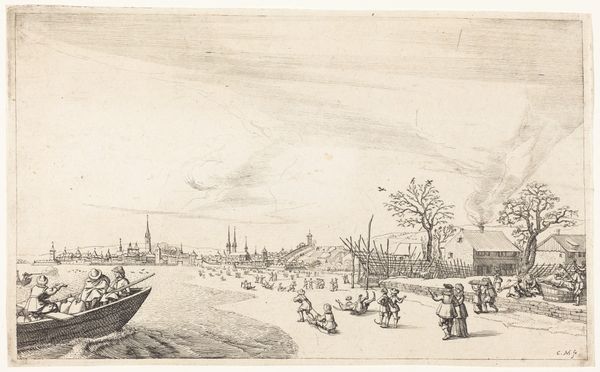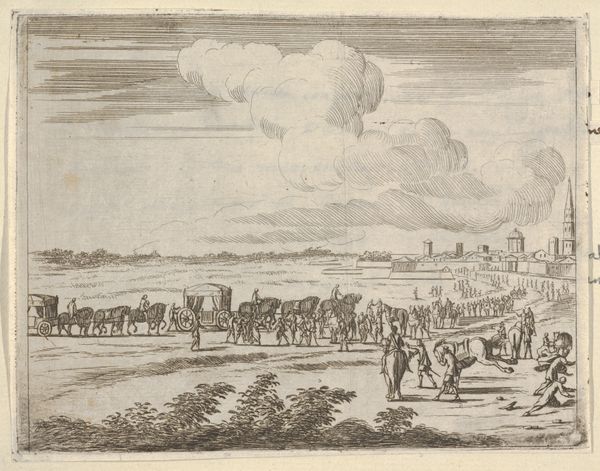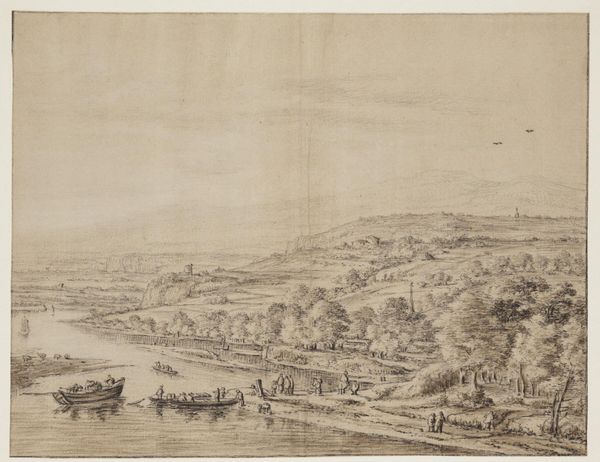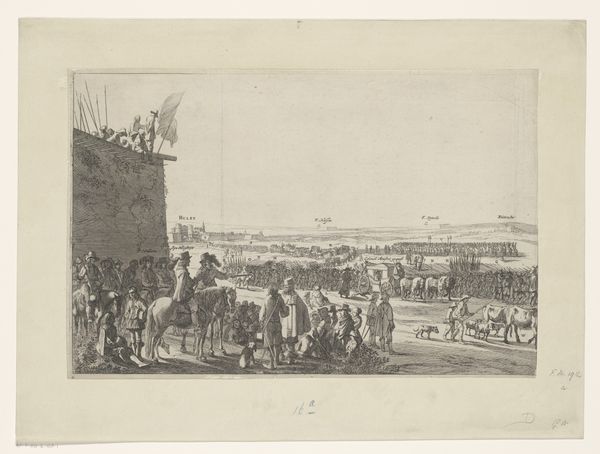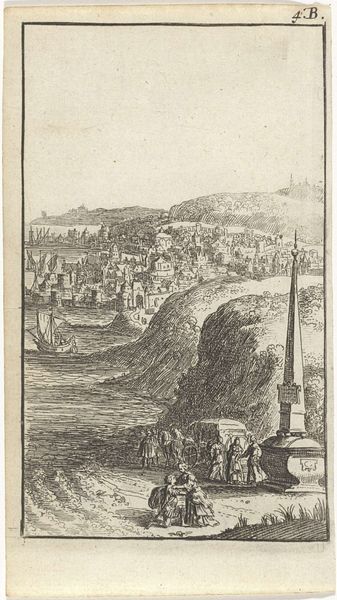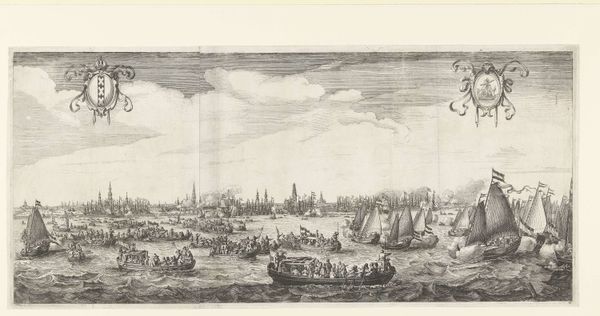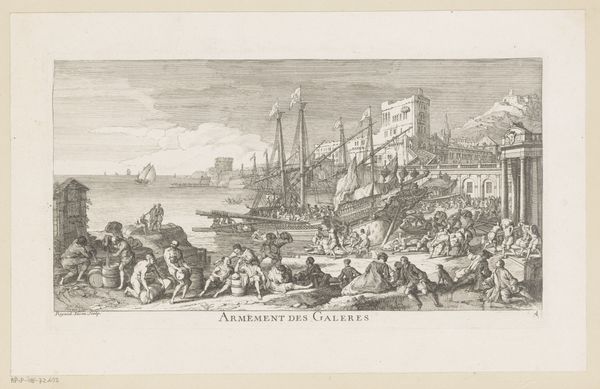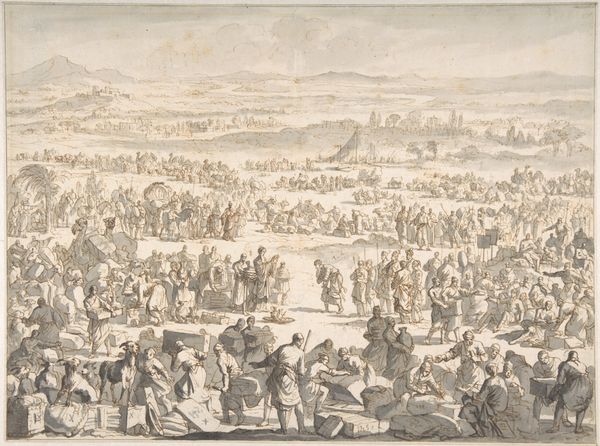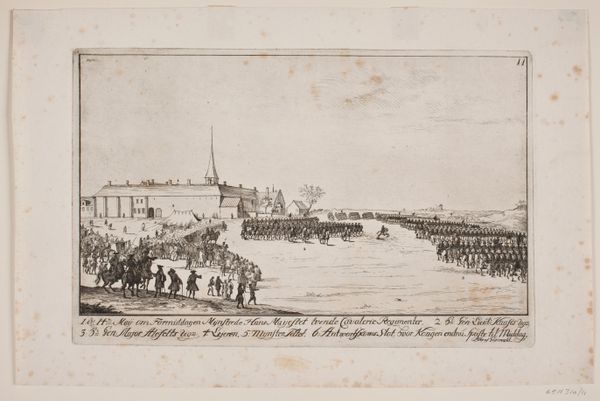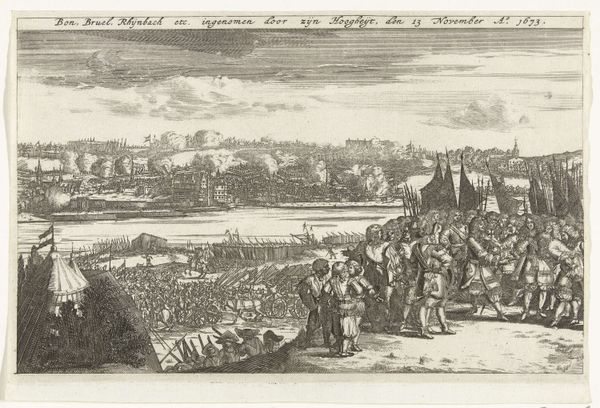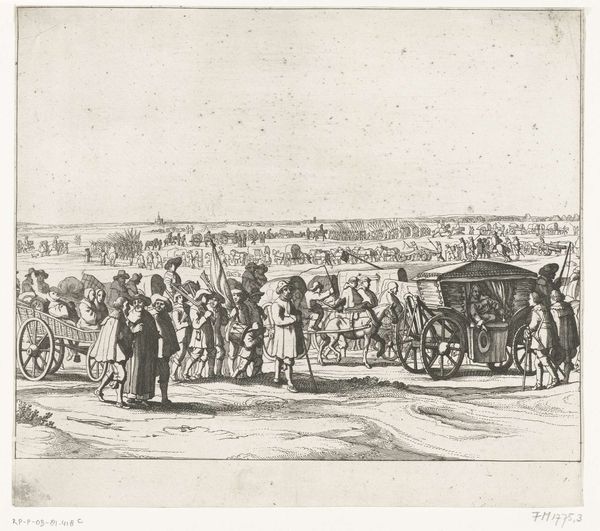
#
pencil drawn
#
toned paper
#
light pencil work
#
pencil sketch
#
old engraving style
#
personal sketchbook
#
pencil drawing
#
pencil work
#
watercolour illustration
#
watercolor
Dimensions: height 390 mm, width 520 mm
Copyright: Rijks Museum: Open Domain
Curator: Jan de Bisschop, a Dutch draughtsman, likely completed this work, titled "The Departure of Charles II for England," sometime between 1660 and 1665. The artwork, held at the Rijksmuseum, features a tonal wash drawing. Editor: There's an atmosphere of great pomp and circumstance... the gentle coloring almost feels muted against such grand activity. A sketch feels like a good way to capture an event as busy as this must have been. Curator: Indeed. Contextually, the composition alludes to the restoration of the monarchy after a period of republican rule under Cromwell. Consider Charles II’s role in a landscape grappling with political upheaval; his figurehead marks a return to power—a shifting identity for a nation redefining itself. Editor: The ships feel significant, almost crowded. For a nation historically dominated by powerful male monarchs, what symbolic meaning might the mode of transport have? Would this say something more about masculinity or other gendered interpretations of power? Curator: Those visual cues signify a re-establishment of not only a particular bloodline but of colonial ambition and transatlantic trading routes, inextricably tied with that line, and therefore to all its legacies. This is underscored by a sea dotted with boats extending far across the horizon, as well as the cannons and dense crowds in the foreground, demonstrating not only popular support for this king but their potential military, political, and financial force. Editor: It is hard not to be drawn to the church building situated away on a rise at the other side of the frame - and with the smoke billowing out and a crowded hillside below it. Curator: Absolutely, Jan de Bisschop skillfully contrasts sacred spaces with secular celebrations. What ideologies will follow Charles II across that water, and for whose interests and whose costs, is indeed suggested in his very departure point here, wouldn't you agree? Editor: He's chosen some interesting perspectives and motifs to use. This drawing feels full of possible entry-points for different narratives! Curator: Very much. His mastery encourages us to look anew, to engage with these power dynamics while contemplating the future they engendered.
Comments
rijksmuseum about 2 years ago
⋮
The English parliament decided to restore the House of Stuart to the throne in the spring of 1660. Charles II, who had lived in exile on the European continent since 1651, returned to England shortly after the Restoration. His departure from Scheveningen drew enormous crowds. Eyewitnesses reported that they had never before seen so many people gathered together.
Join the conversation
Join millions of artists and users on Artera today and experience the ultimate creative platform.

